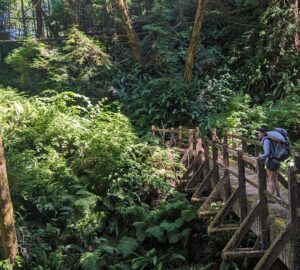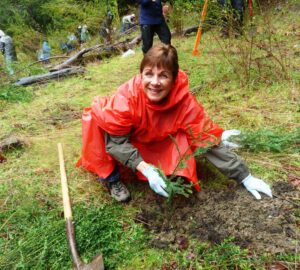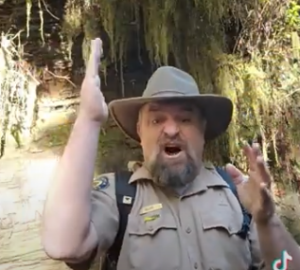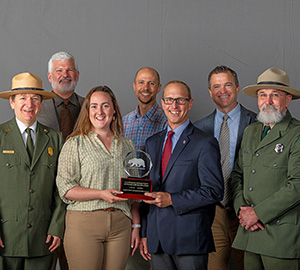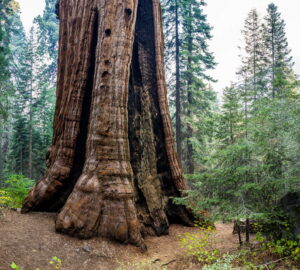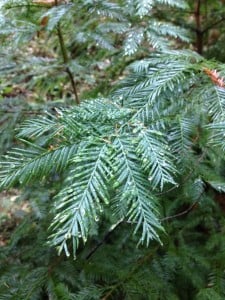 Not many people know this, but I can trace my career as a redwood conservation scientist back to Strybing Botanical Garden in San Francisco. It was during a field trip to Strybing in 1998 that I sat and sketched plants for hours with my fellow introductory biology students and decided I wanted to study plants professionally. Little did I know that years later I would be a scientist thinking about how we protect redwood forest flora and fauna in our rapidly changing world.
Not many people know this, but I can trace my career as a redwood conservation scientist back to Strybing Botanical Garden in San Francisco. It was during a field trip to Strybing in 1998 that I sat and sketched plants for hours with my fellow introductory biology students and decided I wanted to study plants professionally. Little did I know that years later I would be a scientist thinking about how we protect redwood forest flora and fauna in our rapidly changing world.
My connection to Strybing came to mind this week when I read ‘Where the Wild Things Are’ by Mary Ellen Hannibal in the Leaflet, a newsletter of the San Francisco Botanical Garden Society. In this thoughtful piece, Hannibal describes the critical role botanical gardens play in providing new habitat for the world’s most endangered plants. We often think of gardens housing horticulturist’s fantastic creations: plants bred by people to show off new and unusual traits. Today however, more and more botanical gardens are taking on the critical task of keeping at-risk species from going extinct. This sustains genetic diversity for flora that face habitat loss and other treats in their native homelands. It gives me hope to think that gardens are living libraries of our rarest plants and are keeping their lineages alive. Pairing this noble effort with protecting and restoring remaining habitat creates a future for so many of the plants that otherwise would disappear.
While redwoods as a species are not endangered (in fact we have many more redwoods today then we did 200 years ago), it is the oldest redwoods that are incredibly rare and threatened. The young redwoods at Strybing today will grow so much in the coming decades and I love thinking about visitors to the garden in 100 years who will gape in wonder at the magnificent and matured redwoods towering above them. This part of the garden will one day an old-forest grove in its own right.
For more on what is at risk because old redwoods are threatened, read Richard Campbell’s blog, Are Old-Growth Redwoods (Functional) Extinct?

